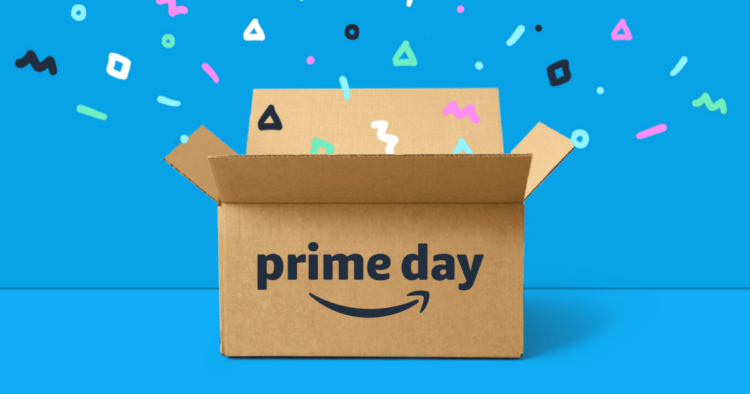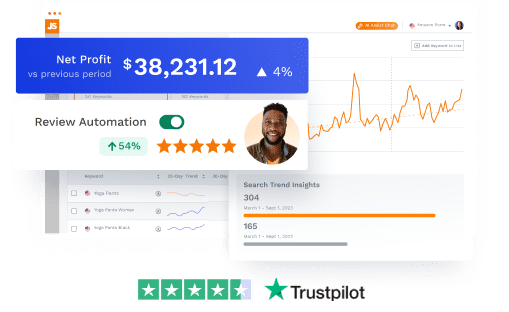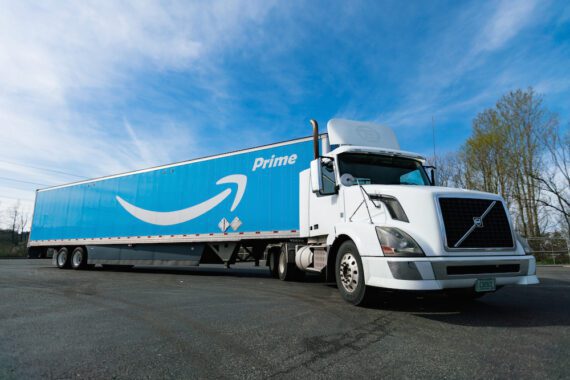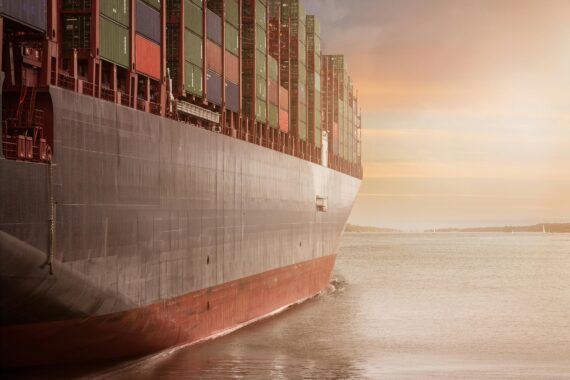Content
expand_moreIt’s that time of the year again when sellers should start preparing for the next big Amazon Prime Day.
If you’ve been selling on Amazon for a while, you know how big of a deal Prime Day is! But you need to be sure you are prepared for the large influx of customer traffic.
Continue reading to learn everything you need to know about Prime Day 2024, and how Amazon sellers can gear up.
What Amazon Prime Day?
Amazon Prime Day is an annual shopping event exclusively for Amazon Prime members. It spans two days, during which Amazon and third-party sellers offer a wide array of discounts and deals across various product categories.
When is Amazon Prime Day?
While there has not been an official announcement as to the exact dates of the sale, Prime Day typically takes place in mid-July. Last year, the event took place on July 11-12.
READ MORE | Amazon Prime Day 2023 Statistics
How FBA sellers can prepare for Prime Day 2024
In order to fully reap the rewards of Prime Day, it’s important to take steps now to get your business ready for the potential uptick in sales.
1. Offer customers multiple ways to save
To entice customers to purchase your products during Prime Day, we suggest you create deals, discounts, and promotions on your listings.
Some sellers don’t run deals at all and see a bump in sales simply due to the increased traffic. But it’s a good idea to offer customers ways to save. Here are four ways to do it:
Prime Day Event Deals
Shoppers come to Amazon during these big sales events looking for deals. While it is not completely necessary to offer a discount to see an increase in sales on this day, it can certainly help.
Sellers have until May 3, 2024 to submit deals to have a chance to be selected for Prime Day week.
Go to the Deals section of Seller Central (Advertising > Deals) and see what you have available to submit during the Prime Day window. Keep in mind that the fees for running deals during Prime Day will be higher than normal. Amazon increases the fees because customer traffic to Amazon is significantly higher on these days, leading to greater exposure.
For our Washable Pee Pads product, we have the option to run a Lightning Deal within the “Prime Day week window,” which will cost $300 – $500, plus the discount you provide. Typically, the Lightning Deal fee is $150, so you need to determine if the increased cost is worth it for your business.
Is the fee worth it? If you’ve had success with Lightning Deals in the past or your product has a high conversion rate, we say give this deal a go, as this deal will likely increase your product’s visibility and sales.
If your product is brand new and doesn’t have much sales history, or maybe you don’t have a big advertising budget, skip this deal and opt for a Prime Exclusive Discount or coupon.
Prime Exclusive Discount
Lightning Deals aren’t the only discounts you can provide during Prime Day. Sellers can also offer what’s called a Prime Exclusive Discount.
A Prime Exclusive Discount is a discount offered to Amazon Prime customers and will show a discounted price with the regular price crossed out and the percentage saved. To set up a discount in Seller Central, go to the Advertising tab > Prime Exclusive Discounts. 
Typically, you’re able to set these discounts during the week of the sale, so keep an eye out for that within Seller Central.
Coupons
A coupon is the best way to let customers know you’re offering discounted prices because it shows up as a bright green tag next to the list price on the product detail page — customers can’t miss it, and they don’t have to go hunting for deals on a separate page. 
Create a Promotion
In Seller Central, Amazon sellers can create different promotions, such as “buy one get one free” or “buy one get one 50% off.” You can also create custom social media promo codes to share with your audience or with an influencer off of Amazon. You will receive a custom marketing page to send potential customers to. 
LEARN MORE | If you want to learn more about prepping your Amazon business for Prime Day, check out this webinar from Tinuiti, featuring Jungle Scout’s own Demand Generation Manager Eva Hart.
2. Order inventory
This may sound obvious, but you want to start ordering inventory now in order to have it ready for Prime Day. Start talks with your suppliers to ensure your inventory will be ready.
Amazon has not stated when inventory should arrive for Prime Day, but the deadline will likely be in the middle of June. Ship as early as you can to account for any issues that may occur.
If you fulfill through FBA, make sure to check your FBA capacity limits before ordering too much inventory. With the new capacity limits, sellers can now forecast their inventory needs up to three months in advance.
If your capacity limits are currently low, work on increasing your sell-through rate and reduce excess inventory as they’re big factors when it comes to your inventory limits in Amazon.
Amazon Just Updated Its FBA Storage Capacity System, and Here’s How it Affects You
3. Create FBM offers if you do not have enough FBA inventory
If your inventory capacity limits are too low for what you are expecting, or maybe you won’t have enough time to ship inventory into FBA, create FBM offers on your listings so you can still offer deals and meet customer demand by fulfilling your own orders (or by using a third-party fulfillment center).
- Sellers are able to offer both FBA and FBM fulfillment methods under one ASIN. To add an FBM option:o to “Add Products” in Seller Central.
- Enter your ASIN.
- Click “Sell this product
- Enter a new SKU to identify the FBM offer “I will ship this item myself” as the fulfillment method
If your FBA inventory runs out, your FBM offer will then go to the Buy Box, as long as you have inventory available for the FBM offer.

4. Optimize your listings
Sellers should also focus on listing optimization in advance of any big sale event. While discounted prices are important to today’s shoppers, your product listing needs to be as attractive as possible to clinch those conversions.
Here’s how to optimize your Amazon listings:
- Audit your listings: Check your title, bullet points, images, and descriptions to make sure they’re up-to-date, and compelling. If you need help writing your listing copy, check out Jungle Scout’s new AI Assist tool within Listing Builder!
- Split test your A+ content: If you are brand-registered, consider using Amazon’s split-testing feature to maximize your listing’s conversion potential.
- Increase your reviews: We know this is easier said than done, but using Jungle Scout’s Review Automation tool will help you increase your review count by sending automatic review requests to all of your customers.
Learn more about how you can use Jungle Scout to optimize your Amazon listings.
Doing this now instead of right before Prime Day will be beneficial as it will hopefully help you increase your sales and Best Sellers Rank before the big event.
The more traction your listings have now, will only help you more when Amazon traffic is through the roof during the sale.
5. Boost your marketing strategy
Make sure customers find your listings during Prime Day by boosting your brand’s visibility, on and off Amazon. Start now, so by the time the sale rolls around, you can entice your broadened audience with incredible deals.
Here are some marketing tips:
- Review your PPC (pay-per-click) campaigns. Consider bidding more aggressively for your product’s most important keywords to increase your organic ranking. If you’re a brand-registered seller, now’s the time to take advantage of your access to Amazon’s advanced PPC advertising solutions. These include Sponsored Brands, Sponsored Brands Video, and Sponsored Display ads.
- Run off-Amazon ads. Drive external traffic to your deals to increase sales. Try using Facebook and Google ads’ sophisticated targeting capabilities, and remember to track your off-Amazon traffic and conversions with Amazon Attribution.
- Use social media. Consumers are increasingly interested in finding products on Facebook, Instagram, YouTube, and even TikTok — capturing their interest with posts, Instagram Stories, and short videos letting them know how much they can save on your products during Prime Day. You can even recycle some of that content through Amazon Posts.
Amazon Prime Day history
In 2015, Amazon introduced Prime Day — a day of deals and sales across Amazon.com — as a way to celebrate their Prime members on Amazon’s 20th birthday.
The first iteration of Prime Day happened on July 15 and ran for 24 hours. Now, Prime Day runs for two full days. Initially, Prime Day deals were only available in nine countries, but the list expanded each year, with the number of participating countries reaching 18 in 2019.
The sales event has been a massive success ever since — even the events of 2020 couldn’t stop it.
Prime Day success over the years
2015
Amazon raked in even more earnings during Prime Day 2015 than it did during its record-breaking 2014 Black Friday sales event. Additionally, in its first year, FBA sellers worldwide saw a 300% increase in sales, with 34.4 million goods sold.
2016
The following year, in 2016, Prime Day grew. Belgium participated (bringing the total number of participating countries to 10), sales worldwide were 60% higher than in 2015, and 3P sellers offering deals nearly tripled their orders year-over-year.
2017
Prime Day 2017 saw even greater growth, not only in terms of products sold (50% more than in 2016) and participating countries (up from 10 to 12) but in the length of time the deal day lasted as well — from 24 hours to 30.
2018
Then, in 2018 and due to the success of the extended hours, Amazon took it a step further and ran Prime Day for 36 hours. Once again, it paid off.
Prime members worldwide bought over 100 million products, SMEs (small and medium-sized enterprises) earned over $1.5 billion in revenue, and it was Amazon’s largest day-and-a-half of sales globally.
2019
Finally, Prime Day 2019 ran for 48 hours, and sales eclipsed 2018’s Black Friday and Cyber Monday sales combined.
During that two-day time frame, shoppers bought more than 175 million items, generating over $2 billion in revenue for third-party sellers. In fact, some sellers reported experiencing an increase in sales anywhere from 23% to 200%.
2020
Amid concerns about the COVID-19 pandemic, which caused manufacturing slowdowns and the prioritization of essential goods, Amazon delayed Prime Day 2020 until October 13-14 in the U.S. Despite Americans’ widely reduced consumer spending during that time, Prime Day still charted record-breaking sales, with Prime members saving over $1.4 billion over the course of the event.
2021
In 2021, Prime Day occurred on June 21-22, earlier than any other year. Despite some consumers being more cautious about their spending, it didn’t stop everyone from finding a good deal during this year’s event.
Prime Day 2021 marked another record year for Amazon with total event sales reaching $11.2 billion, compared to $10.4 billion in 2020. Amazon also highlighted Prime Day 2021 as the biggest two-day period ever for third-party sellers.
2022
In 2022, Prime Day occurred on July 12-13, which was the typical timing for this event. In 2020 and 2021, Amazon Prime Day occurred in October and June, respectively, due to the pandemic.
Prime Day 2022 was Amazon’s biggest year yet. Sales were up 15% from Prime Day 2021 and revenue was up 29% – while saving customers a total of $1.7 billion.
2023
The first day of Prime Day 2023 was the single largest sales day ever on Amazon, making that years Prime Day the biggest yet.
Amazon Prime members purchased more than 375 million items worldwide and saved more than $2.5 billion on millions of deals. This big success was large in part of third-party sellers like yourself.
Leverage Jungle Scout to run and grow your Amazon business.
Brian Connolly is an Amazon seller, ecommerce expert, and writer for Jungle Scout. He lives in the New Jersey Shore area with his wife and cat. When he isn’t writing advice online for aspiring and experienced Amazon sellers for Jungle Scout, he spends his free time boating, fishing, and selling boating-themed items on his Amazon business.










